Some vehicles are designed with a hydraulic steering assist system which depends on hydraulic fluid to build pressure and help turn the front wheels. In this guide we will show you the correct way of checking and adding power steering fluid.
What Goes Wrong?
A power steering system operates under pressure which can cause steering hoses, pump, rack and pinion or box to leak or seep which can cause the system to run low and make noise or stop working.
What's the Cost?
This is a very easy procedure and most repair shops will perform this check for free in most cases.
Let's Jump In!
To check and add fluid to a power steering system you must first find the fluid
reservoir which is under the hood attached to the steering pump, bolted to the engine
front, or on a fender well. If exact locations or procedures are needed you can
ask our experts to supply you with the information
(free), or consult an online resource such as AllData DIY (pay) but this guide and
video will be sufficient in most cases, we will show you several instants so you
get the idea. Here is the location on a Acura which is on the passengers side fender
well, more examples below.
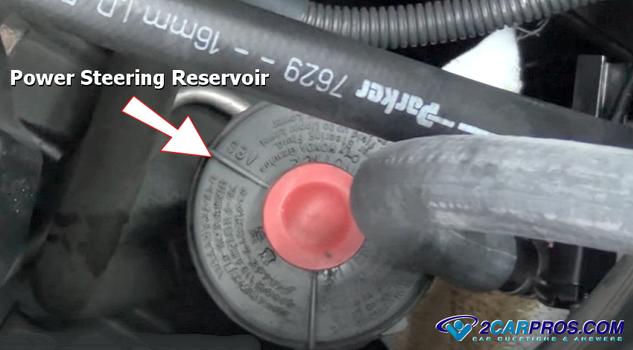
Here is a steering reservoir on an Chevy Suburban which is located on the lower
drivers side of the engine.

This example shows the location for a Mercedes Benz, which is on the passenger side
of the engine, near the top, if you look for the steering pump you will find the
fluid reservoir.
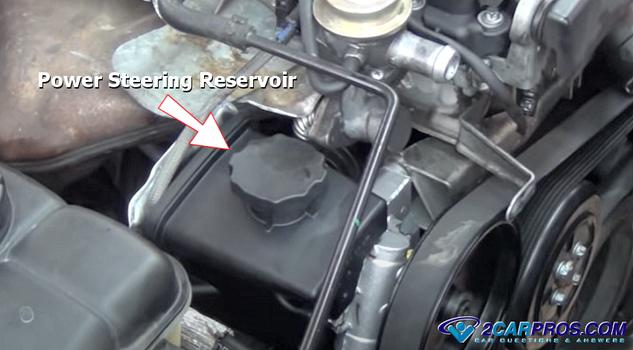
Checking the fluid level: Start the engine until warm, then shut the engine off.
Some reservoirs have a see-through container that tells you where the fluid should
be as in this example, these kinds of reservoirs do not have a fluid dipstick. You
must add fluid until it's between the lines of the reservoir as in the image below.
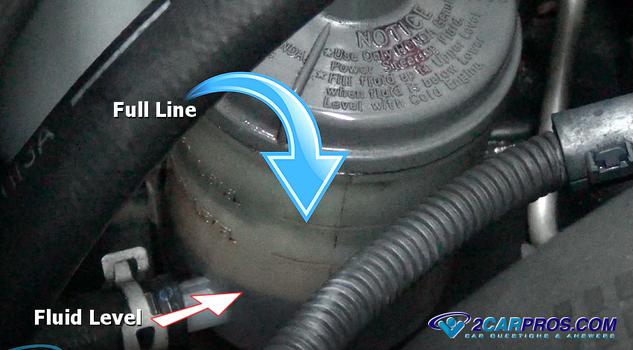
Remove the reservoir cap and insert a fluid funnel, add fluid while watching
the level line on the reservoir.
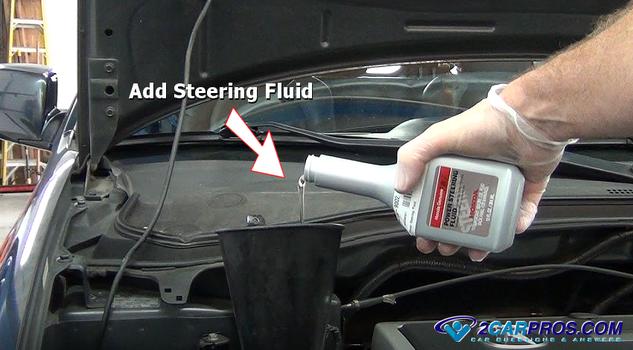
Watch the Video!
Please watch this video of the job being done, then continue down the guide to glean additional helpful information.
Continue to add until the fluid level is in-between the fluid level lines, reinstall
the reservoir cap and wipe up any excess fluid using a shop towel.
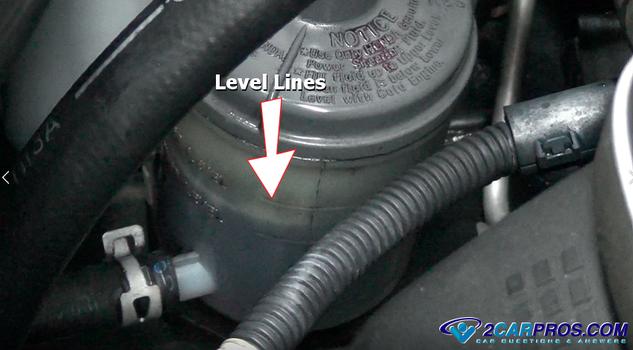
Here is a reservoir type that unitizes a dip stick which is under the cap. This
type is added too just like the see-through reservoir except you will need to add
in increments, checking the fluid level as you go and continue until full.

Here is what the fluid should look like when full on the dipstick.
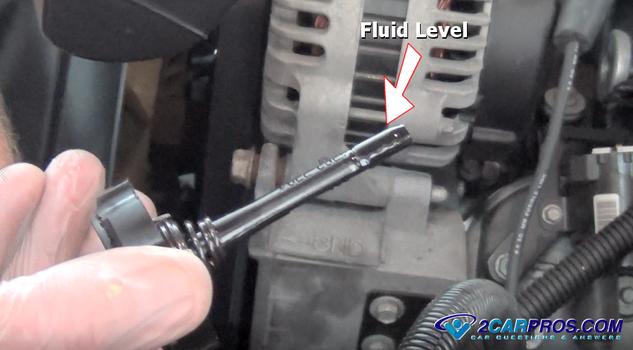
Additional Steering Fluid Service Videos
Questions?
Our certified technicians are ready to answer steering fluid questions for free. We hope you saved money and learned from this guide. We are creating a full set of car repair guides. Please subscribe to our 2CarPros YouTube channel and check back often for new videos which are uploaded regularly.


